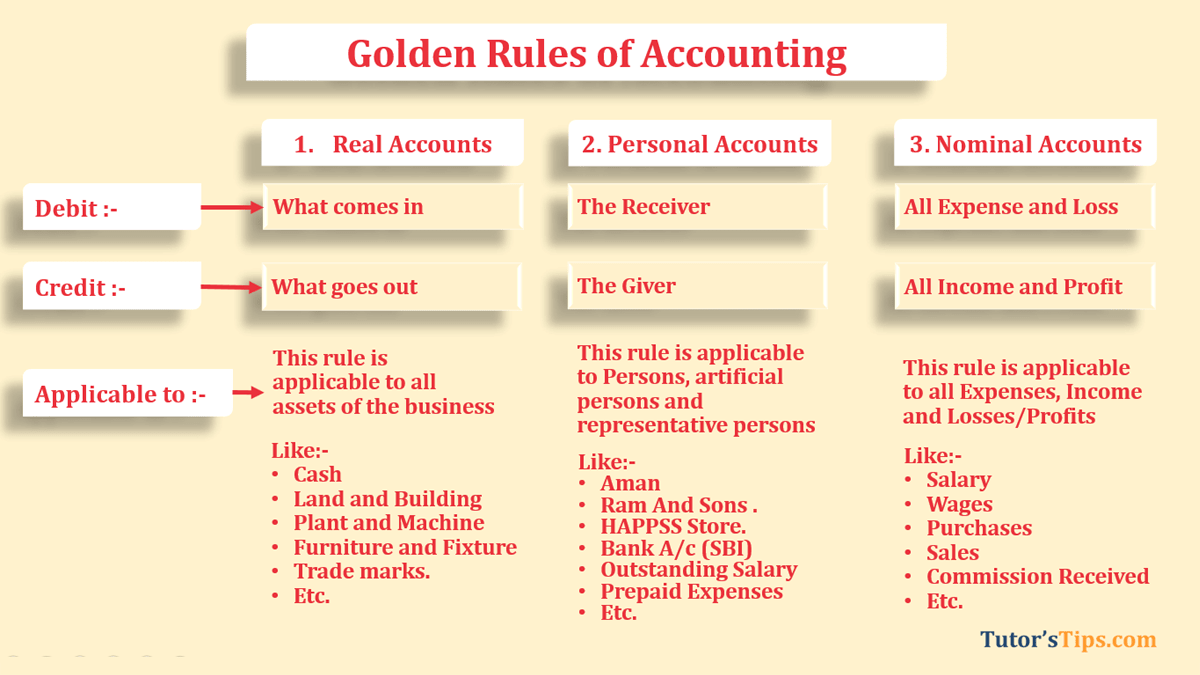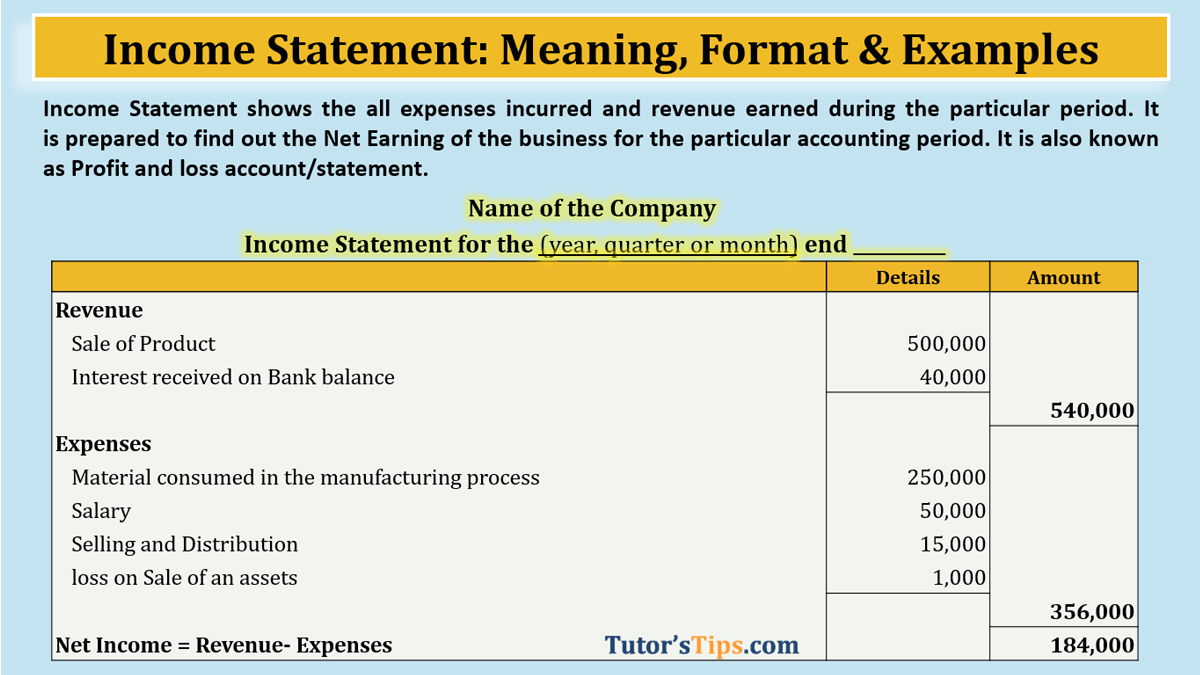Where transaction related to three or more accounts is recorded in the books with the single journal entry is known as a compound journal entry.
What is Compound Journal Entry?
In the transaction, Where two or more accounts of Debit or Credit are involved, which can be recorded in journal day books by posting single journal entry, that journal entry is known as the Compound Journal Entry. It is also known as a combine journal entry.
For example:
AB Co. purchased goods worth Rs. 50,000 and paid 30% amount in cash and the balance by cheque.
So, in the above transaction, there are three accounts involved these are shown as following:
- Purchase Account
- Cash Account
- Bank Account
The Purchase account will be debited and cash & bank account will be credited. So the accounting entry which will be posted in books includes two credited accounts. So that’s why this journal entry will be known as a compound journal entry.
Subscribe our Youtube Channel
Accounting Treatment of Compound Journal Entry:
The accounting treatment of compound Journal Entries may be in two types shown as follow:
- By debited two or more accounts and credited only a single account.
- By debited a single account and credited two or more accounts.
Treatment of journal entries shown step by step with the help of accounting rules are already explained in the previous articles. You can check them from the following link by clicking on the name:
1. By debited two or more accounts and credited only a single account:
Example 1:
Advertisement-X
On Date 01/08/2017 Sold goods to Mr Rajan worth Rs. 40,000/- and He paid Rs. 5,000/- in cash and 35,000/- By cheque.
In this above transaction three accounts are involved shown as below:
- Cash A/c – Rs 5,000/- Cash received for it.
- Bank A/c – Balance payment made with the cheque.
- Sale A/c – Goods sold.

2. By debited a single account and credited two or more accounts.
Example 2:
On Date 01/08/2017 Purchase goods from Mr Rohan worth Rs. 30,000/- and paid him Rs. 5,000/- in cash and 25,000/- By cheque.
In this above transaction three accounts are involved shown as below:
- Purchase A/c – Goods purchased.
- Cash A/c – Rs 5,000/- Cash paid for it.
- Bank A/c – Balance payment made with the cheque.

Question for Practice:
You can Comment the answer in the comment box of the following question, I will check and reply to you as soon as possible.
- 01/04/2018 Mr Sohan started business with Building Rs 5,00,000, Cash Rs 50,000 Plant and machine Rs 2,50,000 and furniture Rs 1,50,000.
- 02/04/2018 Purchase goods from Miss Radhika for Rs 75,000 and From M/s Ramu & Sons Pvt. Ltd. For Rs. 90,000.
- 05/04/2018 Payment made to M/s Ramu & Sons Pvt. Ltd. and get discount of Rs 1,800/-.
- 05/04/2018 Sold goods to Mr Rohan worth Rs. 25,000 and to Mrs Rajni worth Rs. 15,000/-.
- 06/04/2018 Payment made to Miss Radhika for Rs 15,000/- by cash and 58,000/- by cheque and received discounts of Rs. 2,000/-
- 10/04/2018 Salary worth Rs 50,000/- and Wages worth Rs. 30,000/- paid for the month.
- 12/04/2018 Purchase goods worth Rs 25,000 and paid freight on it for Rs 500/-.
- 15/04/2018 Payment received from Mrs Rajni for Rs. 14900 after deducting Rs 100 Discount.
Thanks for reading the topic
please comment your feedback whatever you want. If you have any question please ask us by commenting.
Check out T.S. Grewal +1 Book 2019 @ Oficial Website of Sultan Chand Publication











Accountancy
Home Assignment
I Prepare Journal, Ledger, trail Balance and financial statements for the year ended 31st March, 2021 :-
1/4/20 : Cash20000 Trade Payables8,0000
Bank overdraft45000 Loan from Vansh 40.000
Freehold Premises 28 0000 Furniture 65.000
Inventories30,000 Unexpired Expenses4500
2/9/20 Acquired goods worth50,000 from Mr. Udhav @ 10% trade discount and 5% cash
discount. Half of payment made through cheque
10/4/20 Supplied good costing20000 @ 10% margin to Mr. Dhruv, 60% of the amount received in cash.
15/4/20 Bought goods from Jagrati costing20.000 at 10% trade discount, CGST and SGST @ 6% each.
20/4/20 Sold furniture costing45.000 @ a loss of 20%.
27/4/20 Acquired machinery worth30,000 from M/s Riya, Installation charges paid2000
30/4/20 Issued cheque of 22,000 to udhav in full settlement of his account.
1/5/20 Paid15,000 to Mr. Varsh for loan taken.
10/5/20 Paid office expenses4500, stationery1000 and Rent paid7500.
18/5/20 Received4,500 from Mandeep on account of interest.
20/5/20 Received 60 paise in a rupee from Mr. Dhruv as he is declared as insolvent
24/5/20 cash withdrawn from bank 8000 for office use and5000 for payment of eletricity bill of the
residence.
30/5/20 Invoiced goods costing15,000 @ 20% margin to Ms. Navjeet @ 5% cash discount, CGST and
SGST @ 6% each, cheque received
6/6/20 Cash stolen from cash box 4,000,2500 were collected with the help of police.
7/6/20 Goods destroyed by fire costing3,000, Insurance company admitted the claim1000. CGST
and SGST @ 6% each.
12/6/20 cartage paid on behalf of our customer Sukirti2500
15/6/20 Purchased goods from Sanchi65,000 of which 1/5 th were invoiced to Bhawna at 20% on
sales Bhawna returned goods worth2500, which in turn returned to Sanchi.
30/6/20 Gave away as charity goods1000 and cash1100.
1/7/20 Administrative expenses3000 paid from personal cash and wages6500 from office cash
8/7/20 Income tax paid5800 through cheque
15/7/20 change interest on drawings1200.
Adjustments:-
a) stock on 31/3/21 worth18000 ,market value14,000.
b) Bad debts amounted to250., Provide 10% provision for doubtful debts
c) Wages were paid for only 10 months.
d) Sales include sale of furniture for700, the book value of furniture sold was850.
e) Office expenses were paid upto 30th June 2021.
f) Provide for interest on bank overdraft900.
Can you pls help me to solve this assignment?
Yup, we can help you but It’s a paid Service. So, If you want to get done it then please contact on our WhatsApp no. 9646982100